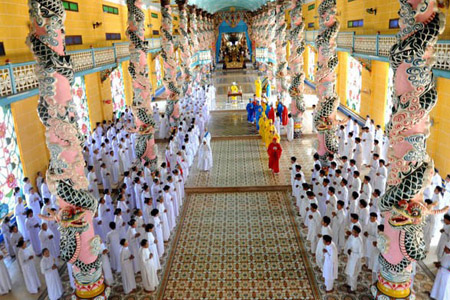The history of land reclamation in South Vietnam started just over three hundred years ago, but the history of this region began long before that and has experienced many ups and downs in accordance with upheavals in the natural, social and human development. South Vietnam was formally known as the Kingdom of Funan, which was founded in the early Christian era and closely connected with the Oc Eo culture. The Kingdom collapsed in the late sixth (or seventh as described in some documents) century. It is said that Funan people were closely related to the Cham and Malayo-Polynesian people but different from the Chenla people, whose language belongs to the Mon-Khmer language family, in the field of culture. The prosperous age of the Funan Kingdom led to the development of a strong monarchy which included the South of the Indochina Peninsula and part of Thailand and the Malacca Peninsula. Chenla, which is on the middle fork of the Mekong River and in the North of the Tonle Sap Lake, used to be a vassal of the Funan Kingdom. It is documented that the Chinese at that time drew a clear distinction between Funan and Chenla.
It is written in Luoc su vung dat Nam Bo Vietnam (An Outlined History of the Southern Region of Vietnam): "Chenla-Cambuja was founded by the Khmer, was located on the middle fork of the Mekong River, North of Tonle Sap Lake, and lived mainly on agriculture. It had been a vassal kingdom of Funan before gaining its independence in the sixth century. In the face of Funan's decline, it attacked and occupied part of Funan in the early seventh century" (p. 19). Although Chenla had successfully conquered Funan and even had become prosperous and created the Angkor civilization (from the ninth to eleventh centuries), it still failed to control the country administratively for many reasons. Chenla had been under the control of the Javanese (Indonesia) for almost a century (the eighth century) and constantly engaged in wars against Champa. To distinguish Funan from ancient Chenla, the Chinese called it Water Chenla (Shui Chenla in Chinese).
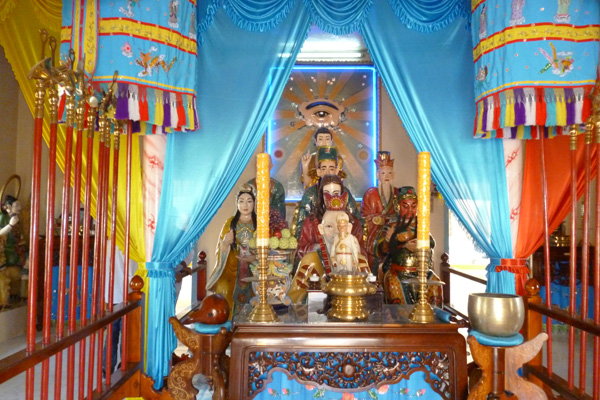
From the collapse of the Funan Kingdom to the Viet people's reclamation (in the late sixteenth century), Water Chenla was flat, marshy land, so few people settled there. They included the Stieng, Cho-ro, and Ma farming in the red-soil lowlands on the Southern Truong Son (Annamite) Range such as Binh Phuoc, Binh Duong, Tay Ninh, and Dong Nai. They also included a small number of Khmer people who lived by growing wet rice in the strips of highland along the rivers of Tien and Hau. A Chinese official arrived here in the late thirteenth century and described the land of Water Chenla as neglected, thinly populated, and deserted.
The reclamation of South Vietnam started with the spontaneous, unstated emigrations of the Viet from the late sixteenth century to the early seventeenth century. Initially, these emigrants lived among the Stieng, Ma, Cho-ro, Khmer, and other ethnic minorities. Later, they went deep into the lowland to change wasteland into cultivated areas. In the late seventeenth century, groups of Chinese emigrants also settled in South Vietnam. In 1671, Mac Cuu and his escort settled in present-day Ha Tien. In 1679, some Chinese generals who had refused to submit themselves to the Qing Dynasty, such as Duong Ngan Dich, Tran Thuong Xuyen, Hoang Tien, and Tran An Binh, fled to Vietnam to seek shelter and were allowed by the Nguyen Lords to settle in present-day Bien Hoa (Kampeap Srekatrey in Khmer) and My Tho (Peam Mesar in Khmer). Later, groups of Viet, Chinese, and Cham people moved to South Vietnam to reclaim virgin soil there. In the early seventeenth century, Lord Nguyen Phuc Nguyen married his daughter, Princess Ngoc Van, to the King of Chenla, Chey Chettha II. This created favorable conditions for the Viet from Thuan Quang to settle in Dong Nai and legalized the peaceful control of the lands reclaimed by the Viet, first of which was the Southeast of Vietnam. In the mid-eighteenth century, under the rule of Lord Nguyen Phuc Khoat (1738-1765), the border of South Vietnam was set as can be seen nowadays, from the parallel of latitude 8°35' to the parallel of latitude 11°. It is written in Luoc su vung dat Nam Bo Vietnam (An Outlined History of the Southern Region of Vietnam): "After more than a century, from the early seventeenth century to the mid-eighteenth century, South Vietnam was put under the control of the Nguyen Lords and soon became a dynamic region with socio-economic development" (p. 40). During the nineteenth century, with the immigration of the Viet and Chinese, the reclamation of land was further accelerated by the Nguyen Court with the great contributions of Le Van Duyet and Nguyen Van Thoai. In the early twentieth century, great numbers of the Viet from the northern and central regions of Vietnam and the Chinese from Fujian and Guangdong (China) moved to South Vietnam, resulting in rapid population growth.
Up until today, the statistics of the population in South Vietnam in general and the specific numbers of the Viet, Chinese, Khmer, and Cham here in particular from the day of its being reclaimed to the twentieth century have not been officially made public. It is recorded in Les societies secrete enterre d'Annam (The Buried Secret Societies of Annam) that Gia Dinh District had 97,000 people in 1819 and 165,598 people in 1847. South Vietnam had 1,204,278 people (including 585 Frenchmen) in 1867; 2,876,417 people in 1905; 2,975,838 people in 1909; and 3,600,000 people in 1920.
The origin of Caodaism is still a controversial topic. Some people have emphasized political factors based on its founders' backgrounds and activities to explain its birth. Some others have opined that this religion appeared purely as a phenomenon to fill up a religious and ideological gap. Generally, like many other religions, Caodaism also originated from certain economic, political, social, and ideological premises. In other words, in order to understand the origin of Caodaism, we need to acknowledge the social context of Vietnam during this time.
In the early twentieth century, French colonists further accelerated their second colonial exploitation of Vietnam with a series of economic policies to pillage as many riches as possible to make up for war losses in their country. South Vietnam was the most exploited, especially in agriculture. For example, the colonists both occupied land to build plantations and imposed heavy taxes on farmers. They also maintain the feudal class as their lackeys in occupying land and charging taxes. They were also supported by the Indochina Bank-an "old octopus" of the French financial capitalists. As a result, farmers in South Vietnam were deprived of their land, impoverished, and turned into slaves by French colonists and Vietnamese feudalists right in their own country. This was the consequence of France's policy of "one-way proletarianization." Together with economic exploitation and pillaging, French colonists also intensified their political domination and cultural enslavement of Vietnam. The economic, political, and social policies of French colonists drove Vietnamese farmers in general and South Vietnamese farmers in particular into unprecedented poverty and misery.
The Vietnamese in general and the South Vietnamese in particular are known for their traditional patriotism and spirit of fighting against invaders. The Southern people incessantly rose up against French colonialists as soon as they invaded Vietnam. The resistance took place in different ways and trends and became more and more violent. The typical revolts in the late nineteenth century included those led by Truong Dinh from 1859 to 1867, Nguyen Trung Truc from 1861 to 1868, Phan Van Dat and Le Cao Dung in 1861, Nguyen Huu Huan in 1862, Au Duong Lan and Phan Cong Tong in 1862, Vo Duy Duong in 1866, and Phan Tam and Phan Phan Ngu in 1867. In the early twentieth century, the struggle against French colonists continued in new ways with the development of secret societies such as Thien Dia Hoi (Heaven and Earth Society) headed by Phan Xich Long (1913-1916) and movements such as Dong Du (Going East) movement (1904-1908) initiated by Phan Boi Chau, Duy Tan (Reform) movement (1906-1908) led by Phan Chu Trinh and Lap Hien (Constitutional) movement in the bourgeois tendency headed by Bui Quang Chieu in 1923. However, these movements finally failed in turn due to class-related limitations. Specifically, farmers could not liberate themselves. In addition, the middle and lower-middle classes in Vietnam were born quite late. It meant that they were still weak at the time when the bourgeois revolution in the world was in decline. At that time, the Communist Party of Vietnam-the political party of the Vietnamese proletarian class—had not been established. Consequently, the Vietnamese people's struggles during that time were ultimately suppressed by French colonists. Failures, impasses in life, and struggles urged part of the South Vietnamese people to turn to Caodaism for comfort and shelter.
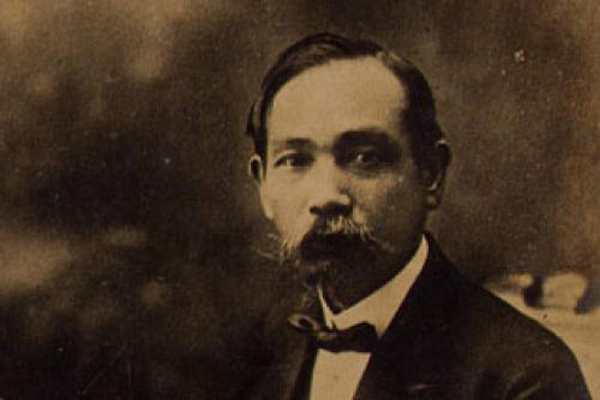
To some extent, the birth of Caodaism can be compared to that of early Christianity-reflecting the stalemate of the slaves and nations in the East in the face of the invasion and domination of the ancient Roman Empire. However, there is a difference between Christianity and Caodaism. The former was initiated by slaves while the latter was established by the upper classes (bourgeoisie, landowners, and petty bourgeoisie).
It should be noted that the South Vietnamese people used both armed and religious struggles in the fight against oppressors. The religion was utilized for assembling forces. Before the French invasion, the South Vietnamese had used religion to resist the Nguyen Court. At the time of the French invasion, some feudal intellectuals rose up against the French colonists under the pretense of religion. Later, the anti-French movement called Thien Dia Hoi (Earth and Heaven Society) (1913-1916), which was led by Phan Xich Long and widely expanded to other provinces in South Vietnam, was also imbued with religious colors. So, it can be said that from its creation, Caodaism aimed to resist French colonists and therefore attracted so many followers.
An important ideological component that led to the birth of Caodaism was the crisis and decline of contemporary religions and dogmas. For its unique features in the history of land reclamation, the South of Vietnam differs from the North and Central in the origin and composition of its population. In the early times, the Viet people who moved to the South of Vietnam from the North and Central had different backgrounds. Most of them were poor people like farmers, craftsmen, and fishermen who had left their native land to earn a living. Some had committed offenses and had been sent there to do hard labor in the State-owned plantations and reclamation bases. Some others were outlaws who settled there to avoid the chase of mandarins. The rests were officers or soldiers who had been sent there to manage the new fresh lands and had decided to stay when their terms ended.
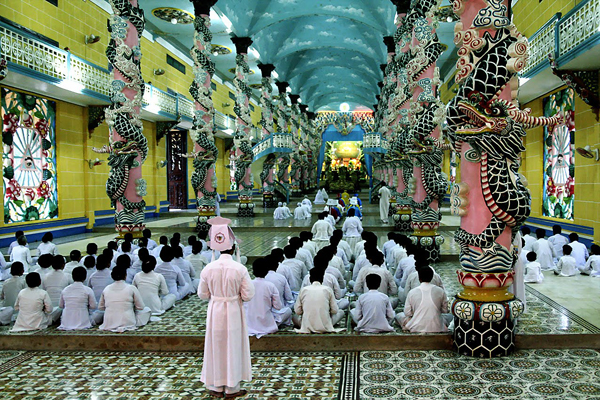
Despite their different social origins, they were connected by their shared Vietnamese traditions and cultural identities. Coming to the new land, they brought along with them the traditional customs and practices of the North and the Central. In the process of adapting themselves to their new environment, however, they gradually gave up quite a lot of the old institutional ties, habits, and customs of the North and Central. Particularly, the South Vietnamese in the new land had to confront nature, dangerous animals, and diseases to survive. Nevertheless, dangers and challenges enabled their sense of adventure and creativity to develop.
However, South Vietnam is blessed with a temperate climate, so the people here do not have many difficulties in their physical lives. Although they are not rich, they do not have to worry about savings. They unite together to overcome challenges and dangers and live in harmony in their daily lives. This explains their typical characteristics: brave, kind-heart, generous, resolute toward enemies, and sincere and open-heart with friends.
South Vietnam was initially home to many ethnic minorities including the Viet, Chinese, Khmer, and Cham. Later, they were joined by the Indians, Malaysians, and Frenchmen. Still, the Viet people made up the majority, so the Vietnamese culture played a decisive role here. During the time of coexistence here, the locals and emigrants lived in harmony and together contributed to making the physical and mental culture of South Vietnam both varied and unique. The coexistence and interference between ethnic groups made the beliefs here richer and more complicated than the beliefs anywhere else in Vietnam. Particularly, in the face of strange and mysterious things in the new land, the early residents of South Vietnam, who almost had low intellectual standards, not only had a great need for beliefs but were also fascinated by superstitions.
In South Vietnam, many types of religious beliefs existed including orthodox religions (understood as complete religions such as Buddhism, Catholicism, Protestantism, and Islam), as well as folk religions and polytheism-typed cults. The locals here also believed in extraordinary religion such as the cult of the Banana, the cult of the Coconut, the cult of the Lamp, etc. In general, South Vietnam before the August Revolution (1945) was a fertile land for the birth and development of varied religions, including Caodaism.
The people in South Vietnam have a great need for beliefs. Before the appearance of Caodaism, the majority of them had followed Buddhism and Confucianism; a small number of them had practiced Catholicism and Protestantism. Then those religions slowly fell into a decline and lost prestige. In the eyes of the local people, Catholicism was associated with French colonists and the loss of the country; therefore, it was suspicious and even despised. Confucianism had been regarded as a moral and political theory and had served well the agriculture-based monarchy. Then, it was no longer suitable with the colonial society of South Vietnam, which was being directly controlled by French colonists and affected by the market economy with the development of industries and westernized tendencies. The local Theravada Buddhism with the motto "self-preserving, self- forgiving" only served Buddhist monks and nuns; therefore, it was hard to fall in line with the local practices and lifestyles of the people in South Vietnam. Mahayana Buddhism had fallen into decay some centuries earlier before it was divided into sects. Protestantism was introduced into Vietnam not long ago, so it had not established a large circle of influence in Vietnam. In summary, the depression of the then religions and moral philosophies led to a gap in belief and created favorable conditions for the appearance and development of Caodaism.
Caodaism originated from the practice of invoking the spirits of the dead and especially the thought of the three traditional religions in Vietnam (Buddhism, Taoism, and Confucianism), which were introduced into Vietnam a long time ago and restored in South Vietnam in the late twentieth century thanks to the introduction and activities of Ngu Chi Minh Dao (the Five Branches of the Bright Way Sect, including Minh Su, Minh Ly, Minh Thien, Minh Duong, and Minh Tan). Particularly in the early 1920s, Spiritism-a Western superstitious practice, similar to the Vietnamese practice of invoking the spirits of the dead-was introduced into South Vietnam from France. It was warmly welcome by part of the French bourgeoisie, landlords, petty bourgeoisie, and officers here.
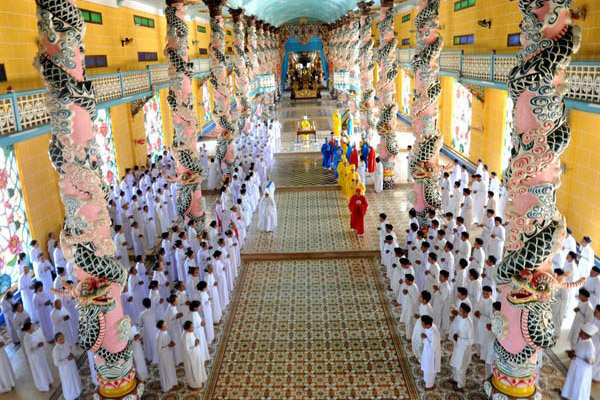
Having been introduced into South Vietnam, spiritism soon combined with the practice of Cau co (raising spirits by means of Ouija) of Ngu Chi Minh Dao and initiated the movement of Cau co Chap but (raising spirits by means of Ouija and putting down in writing the spirits' messages) or Co but (fuji or planchette writing). This movement developed strongly during 1924-1926 in the areas of Sai Gon, Cho Lon, Gia Dinh, Thu Dau Mot, Can Tho, My Tho, and Tan An, among others. (This directly led to the birth of Caodaism.) Initially, of the boards used for both spiritism and ngoc co of Ngu Chi Minh Dao were used by this movement; then, only the latter was used.
It can be said that early in the twentieth century, Caodaism would not have appeared and developed without the people's impasse in life and their struggle against the French invaders, the decline of religion and moral philosophies, the existence of the traditional religions and other cults in Vietnam, and the penetration of Ngu Chi Minh Dao and spiritism. In other words, the appearance of Caodaism as a socio-religious phenomenon was inevitable since it was the convergence of all economic, political, social, and ideological factors that were needed for the birth of a religion. Thus, Caodaism could not come into existence in any other period but that from the end of World War I (1918) to the August Revolution (1945).

